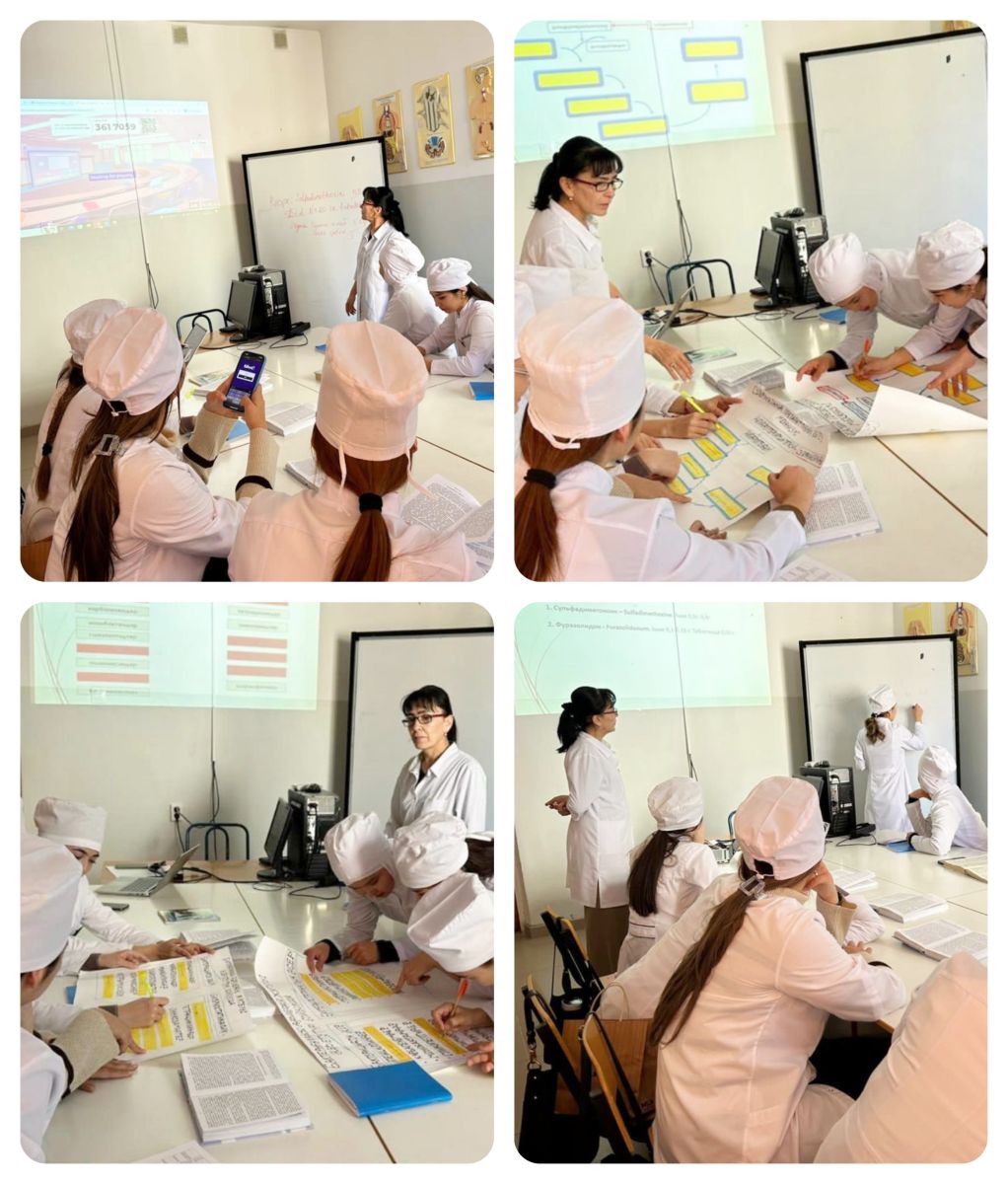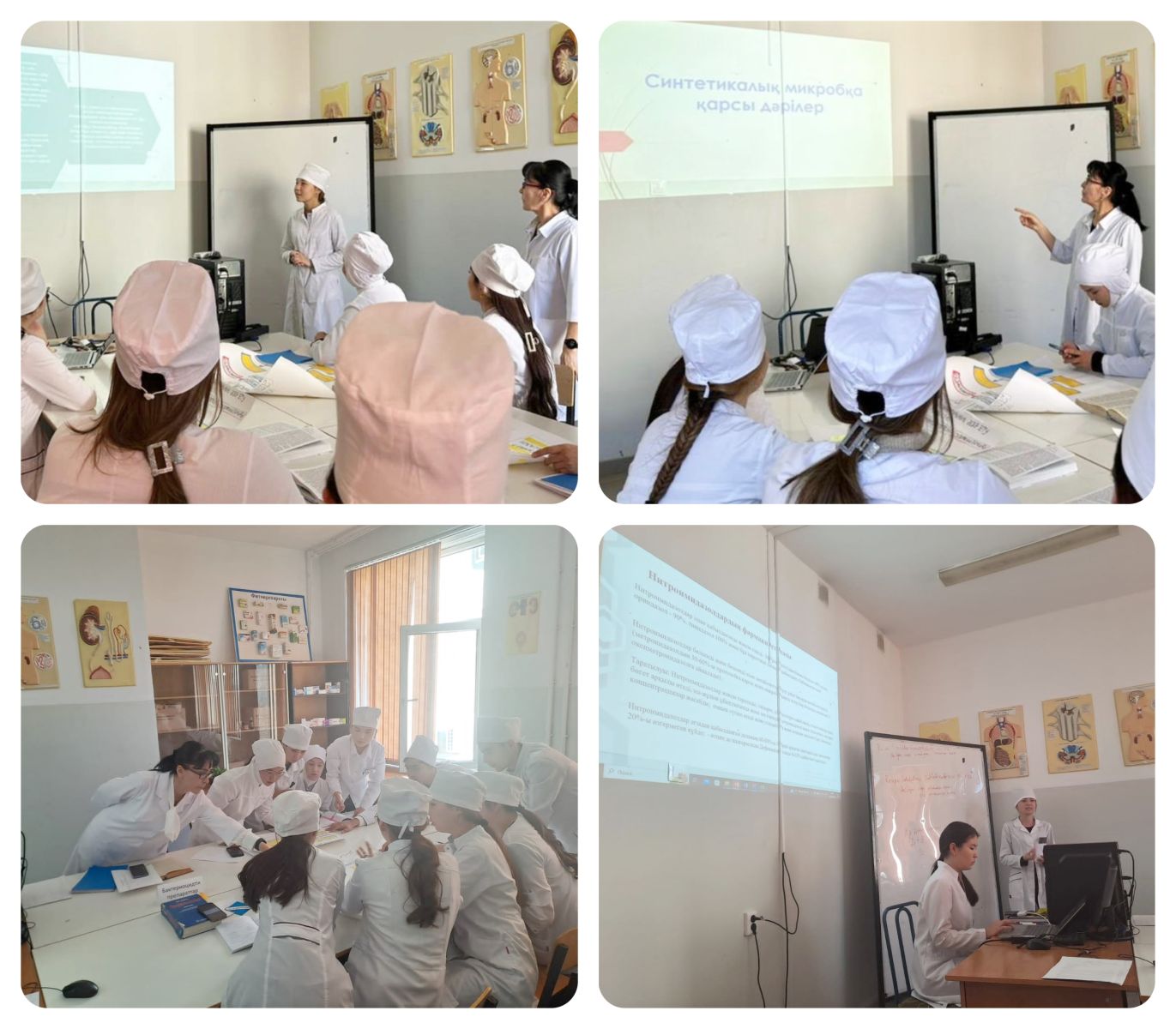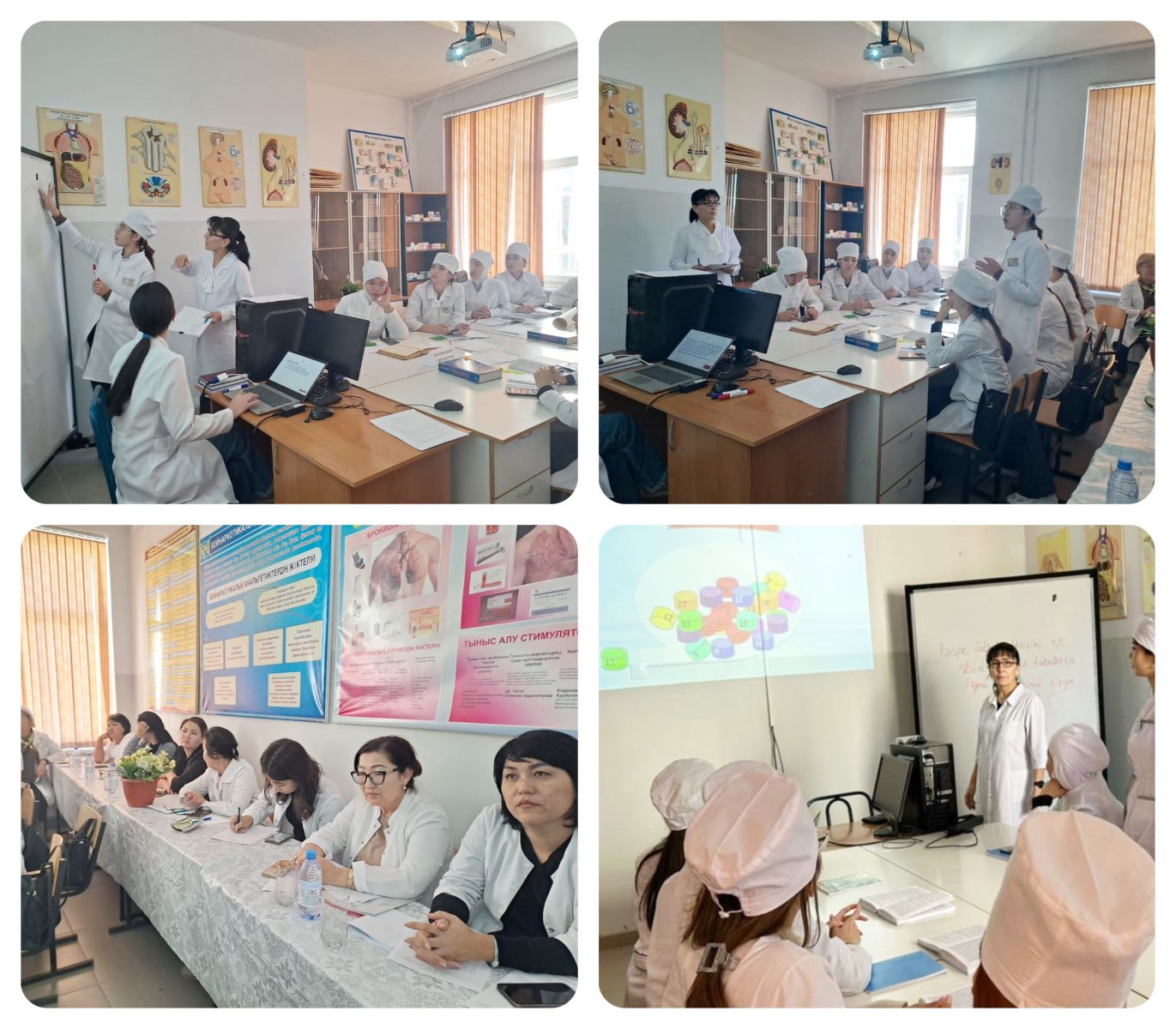"Practical lesson using active teaching methods"

"On November 1, 2023, from 9:00 to 11:50, an open practical session on the subject of ''Pharmacology-1'' was conducted at the Department of ''Pharmacology, Pharmacotherapy, and Clinical Pharmacology'', utilizing active methods of interactive learning on the topic ''Synthetic Antimicrobial Agents'' for the 3rd-year students of the В-ПҚ-02-21 group, within the educational program 6B10102 'Pediatrics.' Senior lecturer Dustanova J.T. led the session.
Following mutual greetings, the professor commenced the session by outlining the objectives: to establish a solid understanding of synthetic drugs, instruct on providing knowledgeable recommendations for the use of effective, safe, and accessible antimicrobial agents considering their pharmacokinetics, pharmacodynamics, interactions with other medications, individual sensitivity, concomitant diseases, and the body's functional status (pregnancy and lactation). Moreover, students were to learn to prescribe antimicrobial agents in the appropriate format using reference materials, utilize sources of clinical-pharmacological information such as handbooks, electronic databases, and internet resources, and enhance the learning process by creating effective cognitive activities, instilling elements of communication culture during collaborative activities.
The instructor provided a clear schedule of the session's stages. The review of foundational knowledge took the form of an exposition on the topic using an electronic presentation (PowerPoint) by the students, where they provided their answers to the discussed questions regarding 'Synthetic Antimicrobial Agents.' The students showcased their abilities in summarizing and drawing conclusions, demonstrating their analysis of the properties of drug groups and individual representatives, the mechanisms of action of each group of drugs, the pharmacokinetics, and pharmacodynamics of antimicrobial agents, and offering recommendations to patients on the use of medications in various dosage forms. The presentations visualized the theoretical lecture material, enhancing better comprehension.

For the most effective reinforcement of knowledge and skills on 'Synthetic Antimicrobial Agents' and the formation of students' general and professional competencies, the professor engaged them in discussing the educational material using active teaching methods—specifically, TBL methods. TBL (Team-Based Learning) is an educational approach fostering active and efficient interaction among students and between students and the instructor. Team-based learning transforms the student from a passive recipient to the primary actor, deeply involved in the educational process and bearing individual responsibility for improving their academic performance. This method allows instructors to teach students practical thinking simultaneously with theoretical preparation. The appeal of TBL lies in the effective utilization of available resources and the active engagement of students, usually achieved by distributing them into small groups."
In this way, to proceed with the next stages of the session, the group was divided into two smaller groups. The instructor introduced various forms and interactive teaching methods to engage with students in these smaller groups:
1. Working with tables - students were provided with tables outlining the mechanism of action of sulfonamide drugs, the classification of synthetic antimicrobial agents (based on their effects on microbes), and the characteristics of individual representatives of antimicrobial drug groups. Students were tasked with filling in the missing elements.
2. Testing using the Kahoot platform.
3. "Cell Game" - cells contained situational questions related to identifying a medicinal product or a group of drugs. Students were also required to prescribe the given medication.
4. "Bingo Game" - students answered selected questions related to the session's topic by spinning a wheel.
5. Drug analysis algorithm - students were instructed to characterize a drug following an analysis algorithm based on criteria such as group, the drug's Latin name, mechanism of action, indications, contraindications, dosage form, and writing a prescription.

There was systematic monitoring and correction of knowledge and skills at each stage of the tasks. In the final stage, the instructor analyzed the presentations prepared by the students, the results of the tasks completed, and provided feedback on the students' work during the session, highlighting the main errors. Evaluation of each stage of the session and the final grades for each student were presented in an Excel format.
Throughout the session, students thoroughly studied the characteristics of sulfonamide drug groups, derivatives of nitrofurans and nitroimidazoles, quinolone and fluoroquinolone derivatives, oxyquinoline and quinoxaline derivatives, as well as the mechanisms of action, the spectrum of activity, pharmacological effects, applications, side effects, and special recommendations for treating patients with these drugs.
A conclusion can be drawn regarding the unquestionable benefits of implementing team-based learning, which enhances the importance of students' independent work, teaches them to find solutions collaboratively, and improves their communication skills.
 1015 views
1015 views
